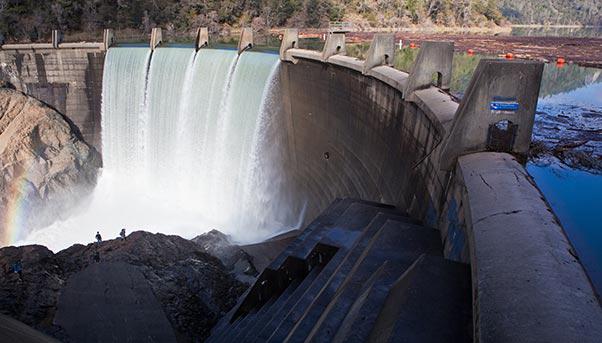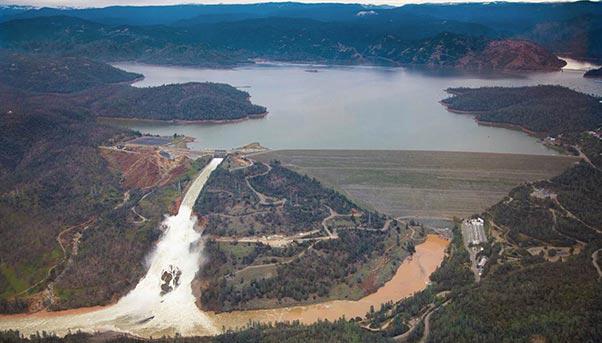
A rupture in the emergency spillway and 200,000 people evacuate their homes. The incident at Oroville’s dam, 250 kilometres north of San Francisco, was a warning bell for California about its network of dams. It brought to the forefront the urgent matter of implementing a plan proposed by U.S. President Donald Trump to invest $1 trillion in the country’s infrastructure.
The urgency was emphasized during a press briefing by White House Spokesman Sean Spicer, who assured that Trump was closely following the events in Oroville.
«The situation is a textbook example of why we need to pursue a major infrastructure package in Congress – dams, bridges, roads and all ports around the country have fallen into disrepair,» he said.
California, for its part, has already drafted a $100 billion investment plan for its infrastructure. It includes the cost of repairing and maintaining its dams. It is a big challenge because the state has 1,585 dams. Of the total, the National Inventory of Dams prepared by the U.S. Army Corps of Engineers estimates that 17 of these dams are in poor condition and could become a hazard like the dam in Oroville.
The incident revealed how serious was the problem. Back in 2005, environmentalists had already been sounding the alarm about the dam’s safety but their calls were left unanswered. The Oroville dam is the tallest in the United States at 234 metres. Built between 1962 and 1968, its reservoir is the main source of water for farmers in Central Valley and elsewhere in the state. According to the experts who inspected the dam and worked to secure the spillway, the damage was caused by weeks of heavy rain that filled up the reservoir to 151% of its capacity.
The risk of rupture at the spillway that would have flooded the communities downstream emphasized the urgent need of repair at most of the state’s dams given how they were built in the 1950s and 1960s.
«We are not maintaining the water infrastructure adequately,» Peter Gleick, founder of the Pacific Institute think tank, told The New York Times in a recent article. «We are not maintaining it in Flint, Mich., and we are not maintaining it at our big dams in California. We need to spend more money and time on maintaining these.»

The risks are high. Few remember how on March 12, 1928, the St. Francis Dam, which represented engineering excellence in the state, collapsed, killing more than 400 people.
«That is a national concern for us,» Lori Spragens, the executive director of the Association of State Dam Safety Officials, was quoted as saying. «Most dams are almost 50 years old. Many of them are very behind in their rehabilitation and they need to be upgraded to current standards.»
But heavy rainfall is not the only risk to the state’s dams. The threat of an earthquake in a particularly unstable region is always near. According to The New York Times, the Anderson and Calaveras dams, both located near San Jose, are at risk should there be strong tremors.
But the most worrisome case appears to be the dam built at Lake Isabella where it is also vulnerable to earthquakes. Californian authorities have lowered the water level in the reservoir, a temporary measure that is not enough to secure the structure for which $500 million would be necessary.
The funds are not available because the budget is made up of federal and state funds that are too few to meet the demands of making safe the dam network in California and many other U.S. states.
The latest figures from the Association of State Dam Safety Officials show that the 2016 budget was $49 million for the upkeep of 90,000 dams across the country. In California, a state with a higher rate of investment, it stops at $13 million.
It is a figure that confirms the urgency to invest in order to avoid another Oroville.

